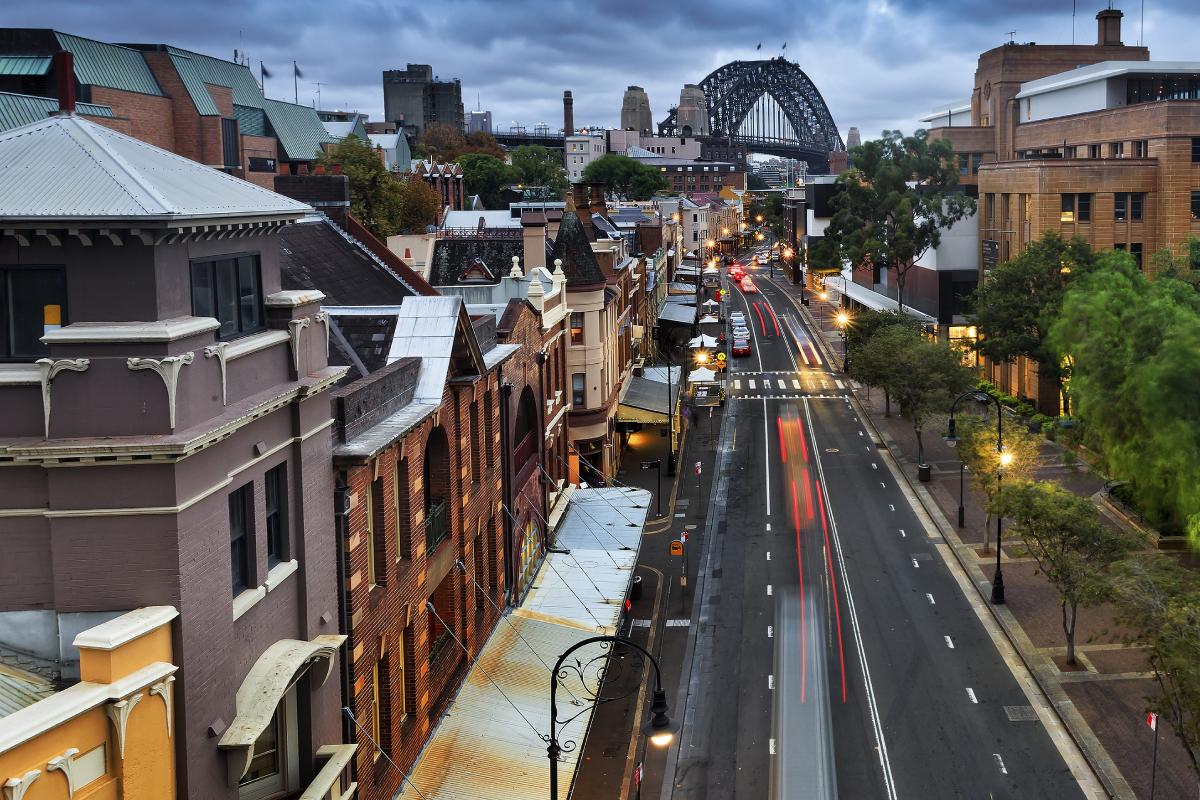The past 16 months have seen remarkable levels of adaption in the real estate sector, government stimulus and economic decline and recovery. Amid renewed and extended lockdowns, some indicators suggest the housing market has been even more resilient to lockdowns in 2021 than through 2020. But there is some suggestion not all pockets of the housing market remain robust.
This article unpacks a few ways housing market performance has evolved through lockdown in 2021 compared with 2020.
Consumer confidence has been more resilient
Consumer sentiment is an economic indicator that is generally positively correlated with home sales. This makes sense, given consumers would presumably be optimistic about their own financial situation when deciding to make a large financial commitment like a home purchase.
The consumer sentiment response has changed with each new set of extended lockdowns through COVID-19, with the decline in sentiment in 2021 becoming shallower, but lasting longer.
Figure 1 compares the ANZ Roy Morgan weekly consumer sentiment index through various lockdowns since March 2020, represented by the shaded areas in the chart.
Through early 2020, which saw the first COVID-19 induced lockdowns in Australia, consumer sentiment had a peak-to-trough decline of -40.1% that lasted six weeks. The second decline, which coincided with rising case numbers and renewed lockdowns across Melbourne, was a peak-to-trough fall of -11.3% that lasted seven weeks. The current lockdown has so far seen a peak-to-trough fall in consumer sentiment that has lasted seven weeks, with a fall of -12.3%.
It is likely that the hit of lockdowns to consumer sentiment has become ‘shallower’ given consumers now have more information about the economic impact of lockdowns, and importantly, the strong recovery trend that followed stage 2 restrictions last year.
Interestingly, the ANZ Roy Morgan index seems to have stabilised above 100, which indicates more people are providing favourable answers to questions around economic and financial conditions.
As discussed in the next section, this may also reflect the various monetary and fiscal support provided from 2020 through to early 2021, which has indirectly supported sales and listings of residential real estate.
Transaction activity has declined, but not as heavily as last year
Initial stage 2 restrictions in 2020 coincided with a drop in sales volumes through April of -33.9%. This included a fall in Sydney sales of -36.7%, and -40.3% across Melbourne. The fall in sales was associated with transactions being harder to carry out amid restrictions, low levels of consumer confidence, and the level of employment falling by about 600,000 jobs through the same month, which may have disrupted intentions to purchase property.
While social distancing restrictions have been reinstated across much of the country, other factors are much more conducive to property sales still taking place. Through 2020, lockdown periods saw the accumulation of household savings (which skyrocketed to 21.6% through the June 2020 quarter, and remains elevated). The cash rate was set to a record low 0.1% in November, and the average cost of debt has continued to decline. Sydney lockdowns have also seen a much milder decline in employment levels, with the number of people employed falling -0.9% across NSW over July 2021, as opposed to -5.9% through April 2020.
Amid these factors, sales volumes have seen a far milder decline through lockdowns. In the month of July, CoreLogic estimates sales volumes have fallen -3.7% in Sydney. However, the longer lockdowns are extended, the further sales volumes are likely to fall.
The fall in newly advertised stock has also been milder through 2021. For the week ending August 29, there were around 1,350 new properties added to the market across Sydney. This is about -23% lower than the five-year average prior to COVID-19, but the number has been climbing. Assuming new listing volumes continue to climb, this marks a peak-to-trough decline of -37.5% of new listings added to market since the onset of the Sydney lockdowns, compared to a peak to trough decline of -52.4% through restrictions in early 2020.
This can be seen in Figure 2, which shows new listings added to the market, with period of lockdown shaded. Listings have not declined as sharply through current lockdown conditions across Sydney.
Figure 2B shows that Melbourne has seen a steeper decline in new listings amid the start of the lockdown since August. However, the city has also seen more volatility because lockdowns have been more frequent. On average, weekly new listings across Melbourne (1,765) have actually been higher than in Sydney (1,577), and are higher than the average weekly listings added across Melbourne through the whole of 2020 (1,345). 

Auction results are diverging between Sydney and Melbourne
Sydney auction results have remained high through lockdown conditions. Since the week starting 28th of June, when a city-wide lockdown was in place, the auction clearance rate has averaged 75.9% through to late August. The volume of properties clearing at auction have averaged 474 per week, which is actually the highest average of weekly auction sales for the period since 2015.
Melbourne auctions have played out differently since the start of the 6th lockdown across the city. The final auction clearance rate has averaged 59.4% so far through the current lockdown.
Importantly, the low clearance rate across Melbourne is largely due the portion of properties being withdrawn from auction altogether, amid a relatively high volume of auctions scheduled before lockdowns. From the 5th to the 22nd of August, it is estimated around a third of properties scheduled to go to auction have been ‘withdrawn’, which means the auction has essentially been cancelled (rather than postponed). The property may be listed instead by private treaty, or not be sold. Withdrawn properties are counted as a non-sale, and as such weigh down the clearance rate.
It is important not to dismiss the portion of auctions withdrawn as merely ‘distorting’ the clearance rate, because it does reflect a loss in demand and vendor confidence. Part of the reason rates of withdrawn auctions may be higher across Melbourne is because private physical property inspections had been prohibited, which was not the case across Sydney.
However, when looking at just the number of properties sold at auction each week, there have actually been a higher number of successful auction results across Melbourne than in Sydney for eight of the past nine weeks.

